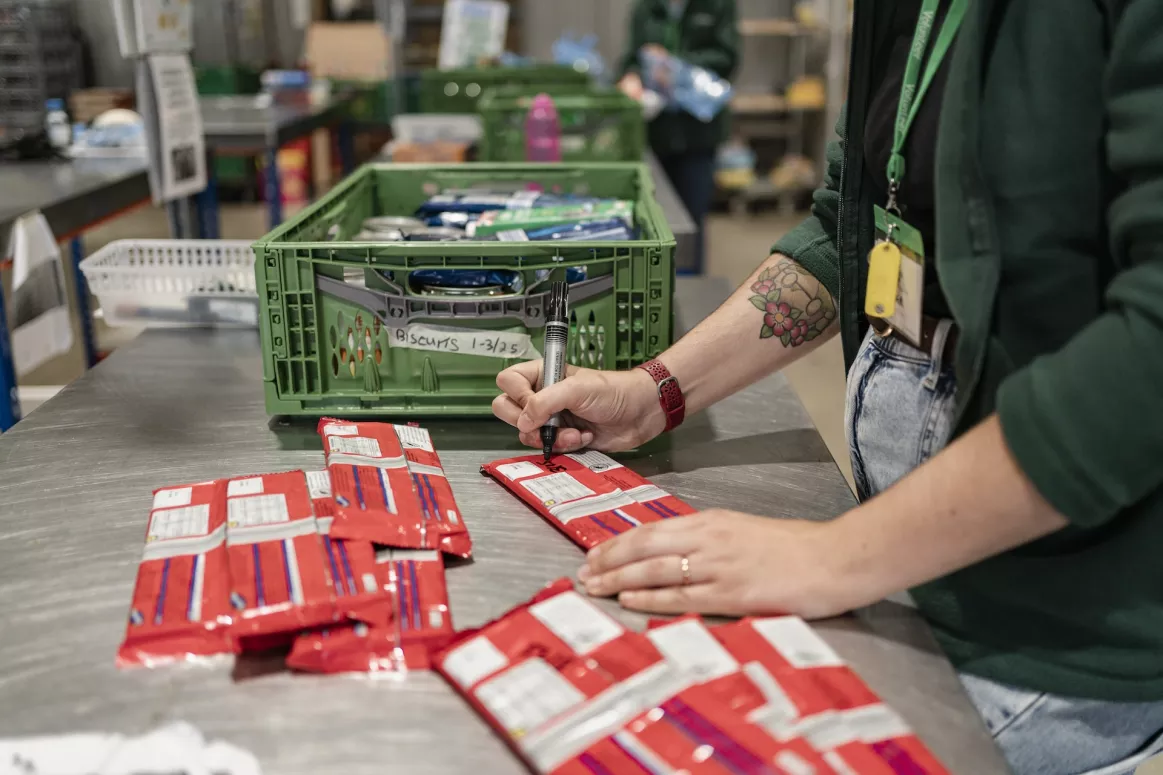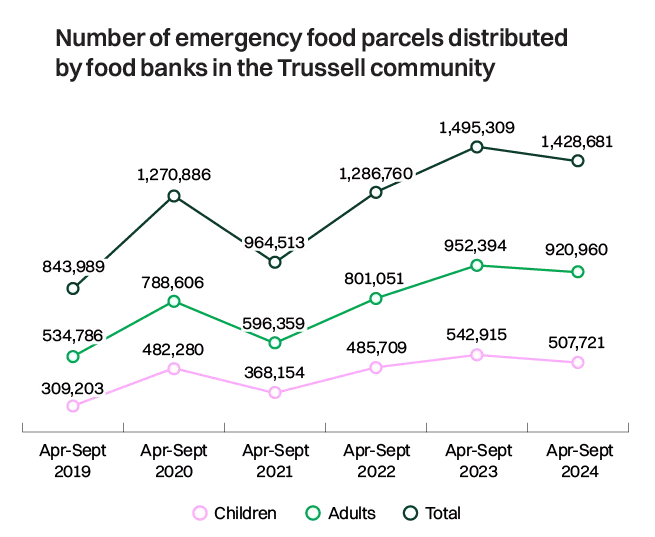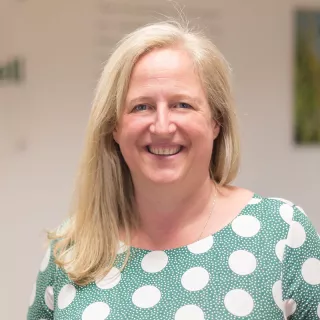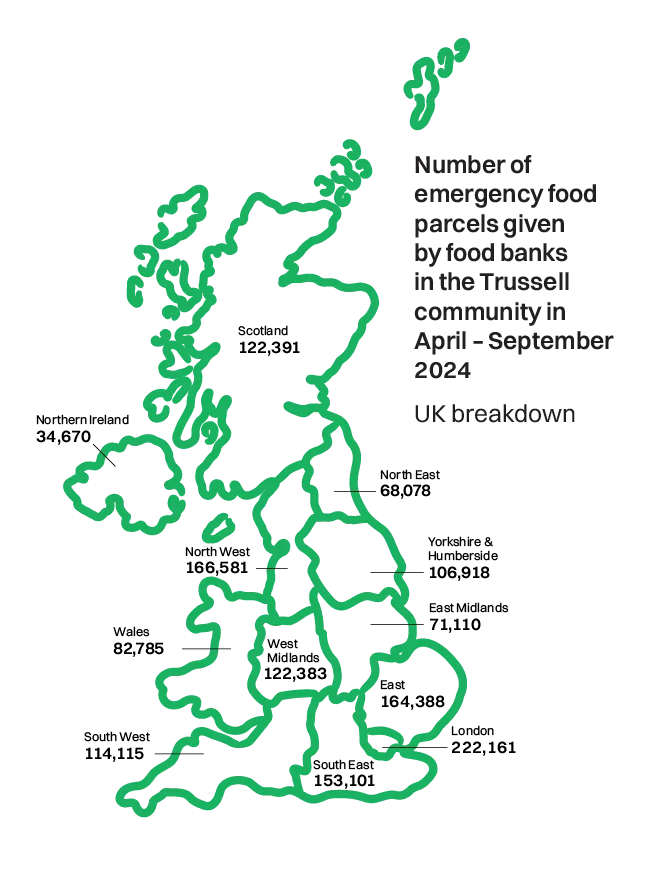Mid-year stats
Food banks in the Trussell community continue to provide extremely high levels of emergency food to people facing hunger across the UK.

Jump to:
More than 1.4 million emergency food parcels were distributed to people experiencing hardship between 1 April and 30 September 2024. This is 69% higher than the same period five years ago.
Families with children were most affected, with 63% of parcels going to households with children aged 0-16. More than half a million emergency food parcels were distributed for children.
This six-month period saw a slight (4%) dip in the total number of emergency food parcels provided compared to the same period last year. There are some possible reasons why fewer parcels have been provided, but it's difficult to say if there has been an actual drop in hunger and hardship (see our factsheets). The need for emergency food is still persistently high and some UK regions, such as London and East of England, are still experiencing increases in need for food parcels.
More than 277,000 people visited a food bank in the Trussell community for the first time between April and September.
People are being forced to turn to food banks because incomes from work, and social security payments, do not cover the cost of the essentials, such as food, bills and toiletries.


The sheer numbers of people still facing hunger and hardship across the UK is heartbreaking. This cannot go on and we refuse to stand by while so many of us are pushed to the brink, left without enough money to live on. Our food banks are a lifeline, offering a warm welcome and space to be heard. They need everyone to play their part to move us towards ending the need for emergency food in the UK. You can help make sure food banks can continue to provide warm, compassionate, practical support and advice this winter by volunteering, donating, fundraising or campaigning to help end hunger in the UK. Meanwhile, alongside our community of food banks campaigning today in Westminster, we will continue to call for change. The UK government was elected with a manifesto pledge to end the need for emergency food and the time to act is now. There have been promising steps, but we need a clearer plan with more decisive action to invest in our social security system, if we are to end hunger once and for all.

What do these stats show?
Every year we release statistics about the number of emergency food parcels our community of food banks have provided to people. We release figures for the first six months of the financial year in November, and for the full financial year at the end of April. These figures cover 1 April to 30 September 2024 – for our latest annual figures, see our end of year stats.
Our statistics are a measure of volume rather than unique users. The data is collected using an online system into which food banks enter data from each food bank voucher, and the number of emergency food supplies is recorded.
For example, if a family of three were referred to a food bank twice in one year, this would count as six supplies on the system because it would reflect six instances of a supply going to someone in the household. However, if a family of three were only referred to a food bank once, this would count as three supplies.
Figures from Trussell cannot be used to fully explain the scale of food bank use across the UK, because our figures relate to food banks in our community and not to the hundreds of independent food aid providers and community groups also providing emergency food, which have increased in number through the pandemic. There are more than 1,400 food bank centres in Trussell’s UK-wide community. The Independent Food Aid Network has identified at least 1,172 independent food banks, while there are also Salvation Army food banks as well as food banks run from schools and hospitals. There are also thousands of other food aid providers including soup kitchens and social supermarkets.
Factsheets
Read our factsheets for a detailed breakdown of what these statistics are telling us at a UK level and the findings for Northern Ireland, Scotland and Wales.